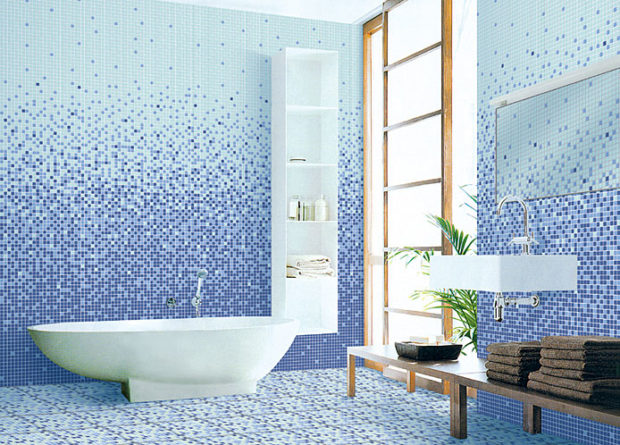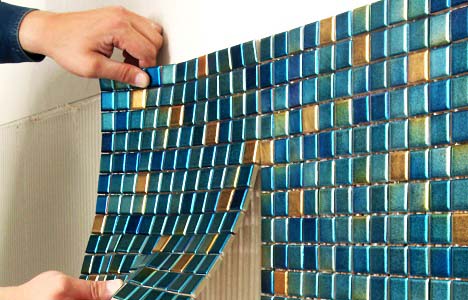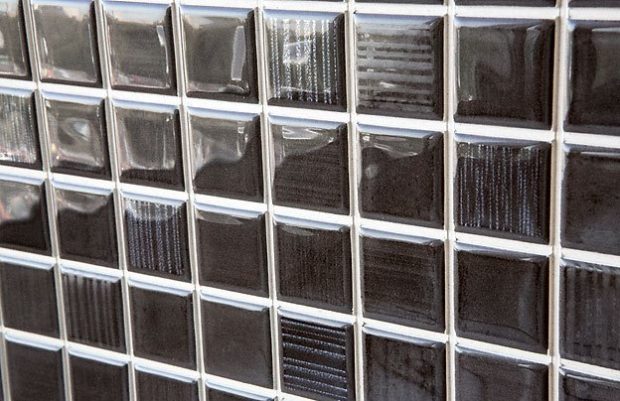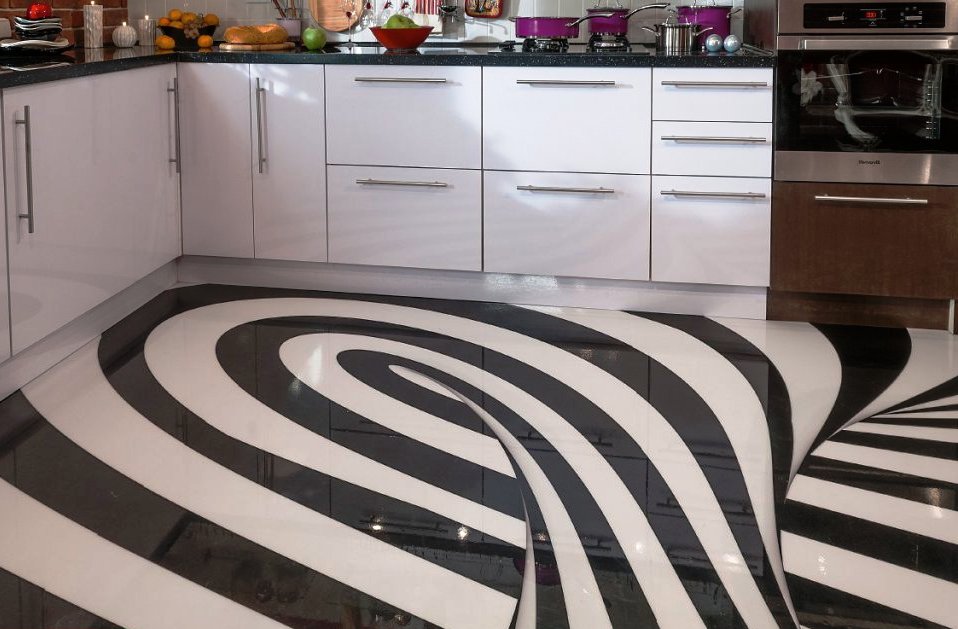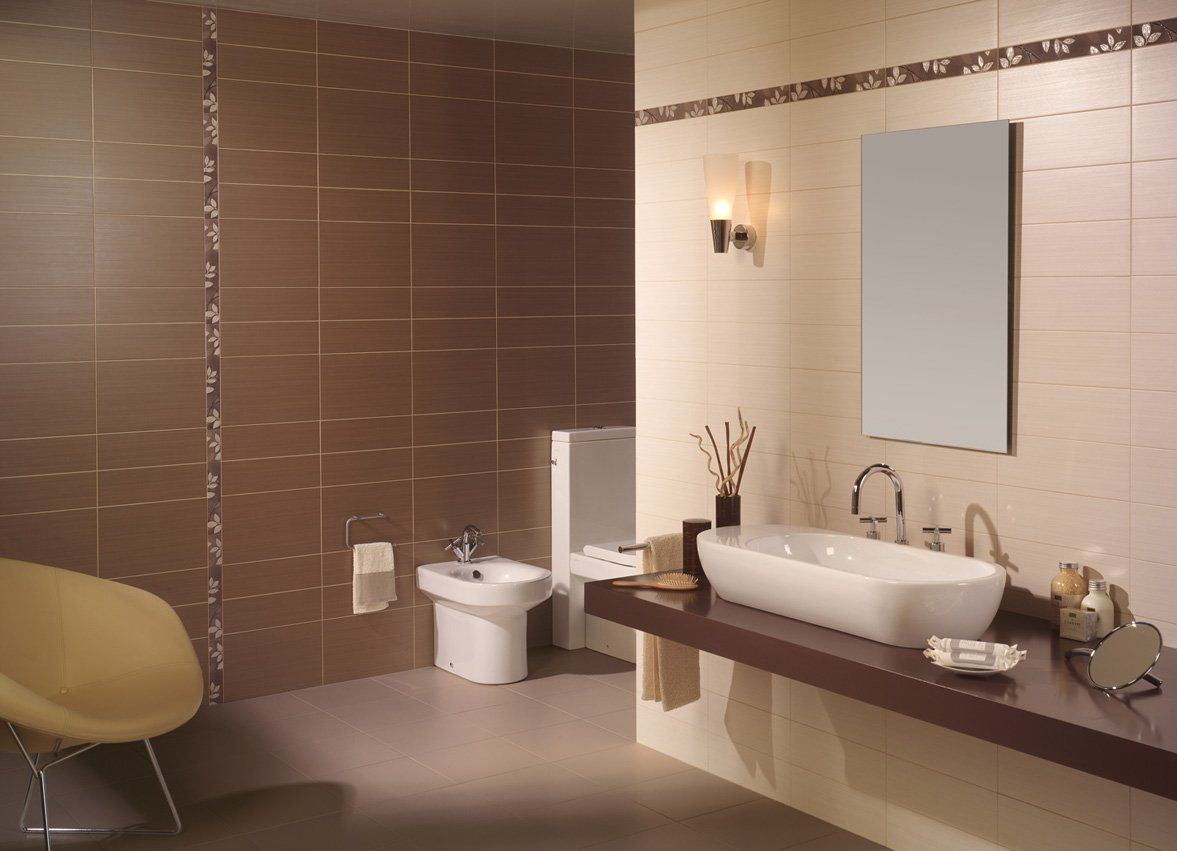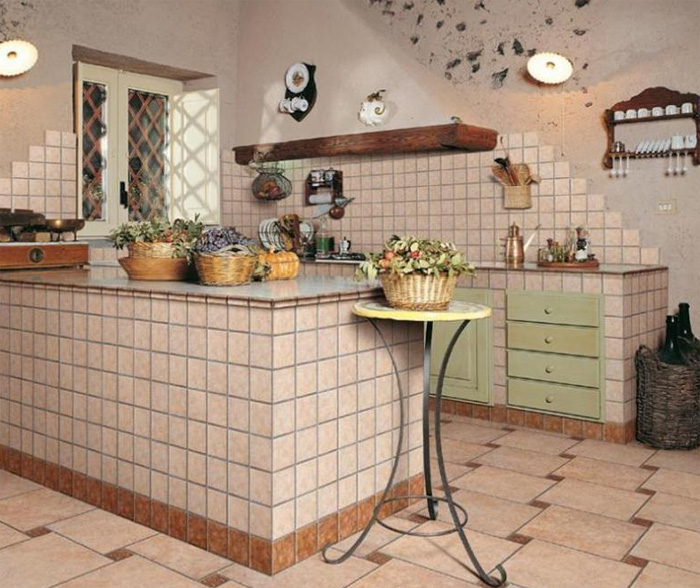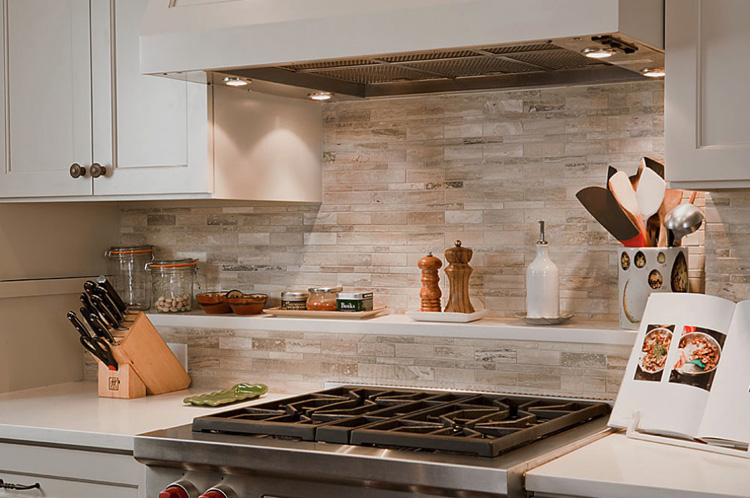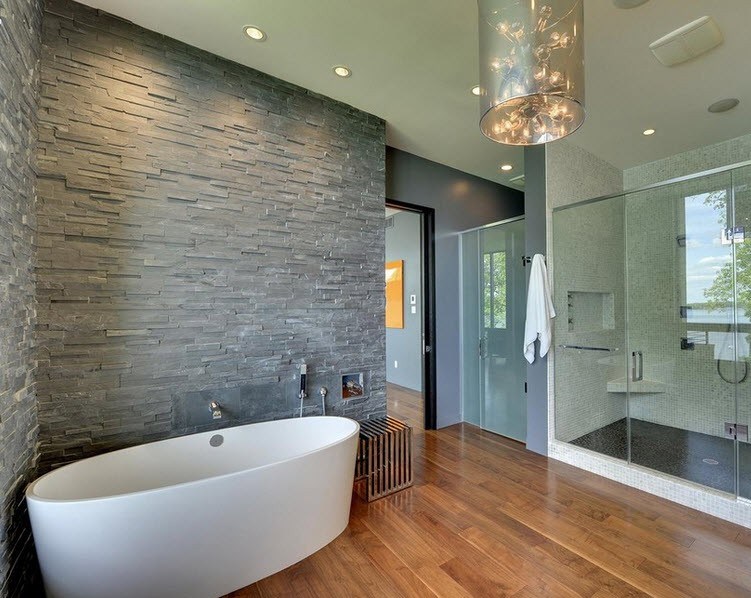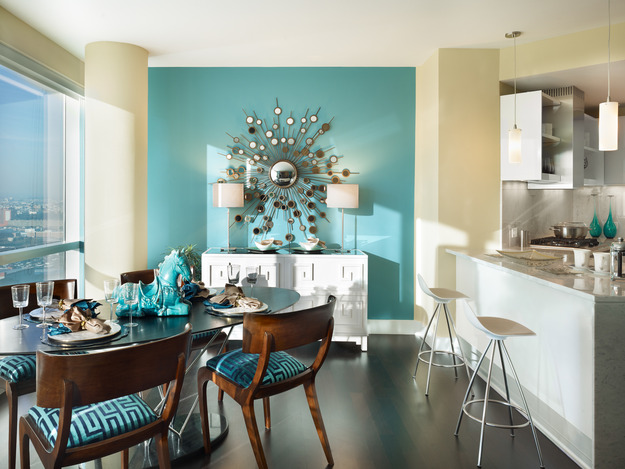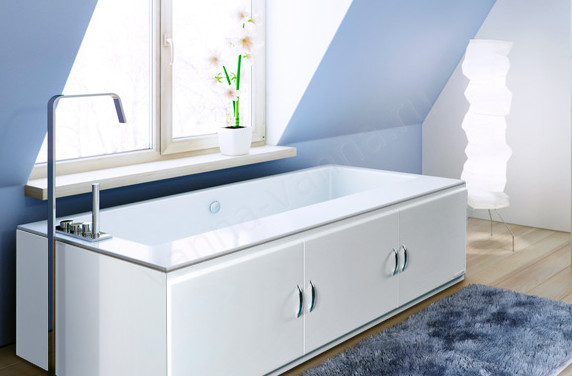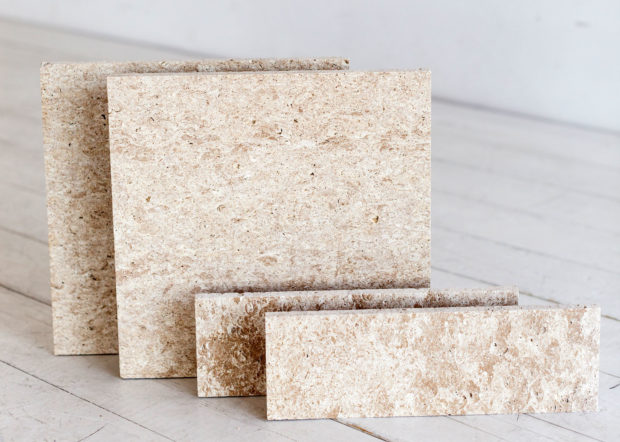8 tips for choosing mosaic tiles for the kitchen and bathroom: types of mosaics, styling
The most ancient mosaic finds date back to the 5th century BC. Thousands of years have passed, and this type of decoration is still popular. Mosaics adorn bathrooms, kitchens and other rooms, it is used to create unique patterns on the walls and floor. Arriving at the store, you can find such a huge assortment of mosaic tiles that your head will spin. How to choose mosaic tiles for the kitchen and bathroom, and not get lost at the same time? What types of mosaics are available on the market, is it possible to do the installation yourself? We will deal with all the questions.
No. 1. Shape and size of mosaic elements
The individual elements that make up the mosaic panel are small in size, so they can easily becreate curved surfaces and lay out whole pictures. Mosaic element may measure from 1 * 1 cm to 5 * 5 cm, though The size is considered to be classic 2 * 2 cm. Usually small items assembled into matrices 30 * 30 cm and connected by paper or plastic mesh, which greatly simplifies the work with the material.
Mosaic can have not only square shape, but this is the most popular format for its execution. Also found rectangular, round, oval, diamond-shaped and other elements.
As for the shades, their range is more than wide. If you take into account that the mosaic is made of various materials, then you can choose any color and texture. It remains only to turn on the imagination and figure out which part of the wall or floor to finish with mosaics, and which drawing can be laid out with its help.
No. 2. Advantages and disadvantages
Mosaic tiles have a number of merits:
- superior appearance. With the help of mosaic panels you can decorate any room, and designers agree that such decoration even visually expands the space;
- resistance to moisture and temperature extremes;
- resistance to various kinds of detergents;
- resistance to sunlight, the preservation of the original color for many years.
The only negative is the high price. If you want to get the effect of a mosaic panel, but do not go broke for repair, you can take mosaic tiles: there are very good products on the market that are well camouflaged as a real mosaic.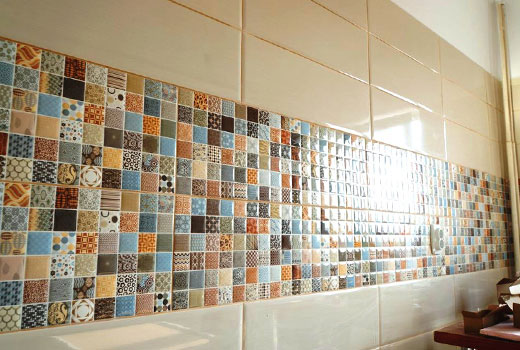
No. 3. Where to use mosaic?
Excellent performance allows you to use the mosaic in the bathroom and in the kitchen, rooms where humidity often reigns.
Use cases for mosaic elements in the bathroom weight:
- lay out with mosaic the wall and floor at the location shower stall or bathtubs;
- you can save and use mosaic along with the usual ceramic tiles. The result is interesting decor at minimal cost;
- on one of the walls you can lay out a whole picture or mosaic ornament. It can be some kind of landscape, geometric abstraction or just a multi-colored panel;
- mosaics can lay out the built-in shelves and complement the backlight;
- bathroom screen it is also possible to revetment with a mosaic, but its color needs to be selected according to color of a floor and walls. By the way, the most daring lay out the mosaic and the inner surface of the bathroom;
- you can decorate the area around mirrors or washbasin.

On the kitchen usually put out of mosaics apron. It can be a decoration in monochrome tones, or a beautiful pattern that will set the kitchen mood. However, the work area is not the only place where you can use such a cladding. Mosaic can decorate kitchen floor and a wall near dining table. Great option - lay out with mosaic worktop or dining table.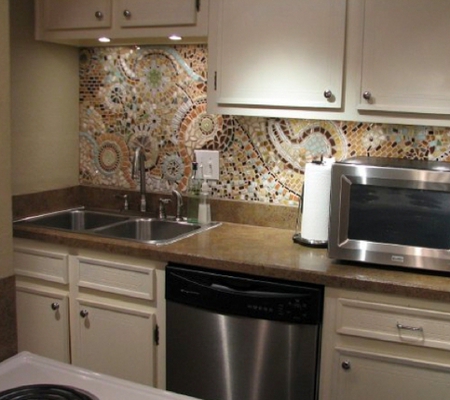
Mosaic panels can be used in other rooms. IN hallwayFor example, with it you can lay out a zone about front door or mirrors, in living room - highlight zone with a sofa or TV. Mosaic can be decorated niches, the columns and other architectural elements, as well as decorate fireplace. In the bedroom, you can make a headboard in this way. the beds.
If you choose the right pattern, you can achieve a visual increase in space. Landscapes with perspective work well in this regard (by analogy with photo wallpaper), abstract curves and light shades. Vertical drawing visually raise low ceilings.
Number 4. Types of mosaics according to the material of manufacture
Ceramic mosaic
Ceramic mosaic is the most popular and most versatile option. This is actually the same ceramic tile familiar to us, only of a smaller size, therefore all the operational features of such a mosaic will be identical to the tile. The surface of the material may be glazed (the easiest option) rough, have blotches of other colors, stains, small cracks (craquelure), etc.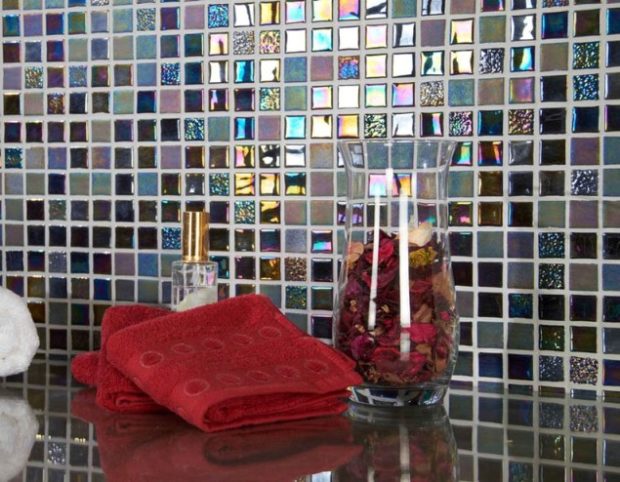
To the main the benefits ceramic mosaic should include:
- a gorgeous variety of colors and textures, so translating any design idea into reality is not a problem;
- resistance to moisture, temperature extremes, detergents, wear, ease of care;
- high strength, fire resistance and durability.
Ceramic mosaic goes well with tiles, can be used with it to focus on specific areas. The shape of the individual elements can be any, but mostly square tiles are found.
Glass mosaic
Glass mosaic is not far behind in popularity. It appeared earlier than other species and is considered one of the oldest finishes. Once such a decor could only afford the most influential and wealthy people. Today, such a finish, although not considered the cheapest, is still much more affordable.
Glass mosaic in composition is identical to ordinary glass, but many times stronger than it. Material is made on the basis of quartz sand, feldspar and metal oxides, which are responsible for color. All components are fused at 14000C and above, and then stamped at high temperatures. Strength is achieved by firing molten glass poured into molds, as well as due to the small size of the elements.
Main advantages:
- excellent appearance and a wide variety of shapes and colors. Items can be transparent, matte, translucent, glossy, and beautiful colors are achieved by adding natural dyes. In addition to the standard square, you can find elements of round, diamond-shaped and other shapes;
- hygiene and inertness to bacteria and microorganisms - mold on this material just does not appear;
- resistance to temperature extremes and high humidity, so that the glass mosaic is suitable for the bathroom and kitchen;
- ease of care, but rubbing the material with detergents with abrasive particles is not worth it - scratches may appear;

- high strength.Despite the fact that glass mosaic is slightly inferior to ceramic in this indicator, it can still be used to finish the floor. True, in this case it is better to take material with maximum slip resistance, an additional anti-slip effect will create rough grout seams;
- heat resistance;
- frost resistance, so the material is suitable for facing open pools;
- among all types of mosaics, glass is the cheapest.
For the installation of transparent and translucent mosaics, it is better to take only white glue. The material can be used in bathrooms and in the kitchen, for the design of swimming pools, fountains, fireplaces, as well as for decorating walls, floors and ceilings in residential premises.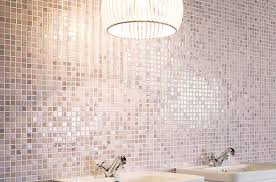
Smalt mosaic
A smalt mosaic is obtained by pressing and sintering particles of colored glass with the addition of dyes. The result is a densely colored opaque material with unique properties:
- increased strength, frost resistance and abrasion resistance compared to conventional glass mosaics. The material can be safely used for finishing places with maximum load;
- resistance to moisture, high and low temperatures, aggressive substances;
- unique appearance. Despite the fact that the elements of such a mosaic are opaque, they seem to emit light from the inside. Manufacturers have learned to make smalt in ten thousand different shades, but individual elements are always slightly different in tone, which, when decorating large mosaic panels, allows you to get amazing decorative effects. Elements of various forms are produced.

The main disadvantage is the high price. Since the production technology of smalt is more complicated than that of a conventional glass mosaic, the total cost goes higher.
By the way, it is smalt mosaic used by professional mosaics to create decorative panels. The whole sheet of smalt is divided into elements of the necessary shape and size by a small breaker. This process is traumatic, therefore it should be performed only by professionals.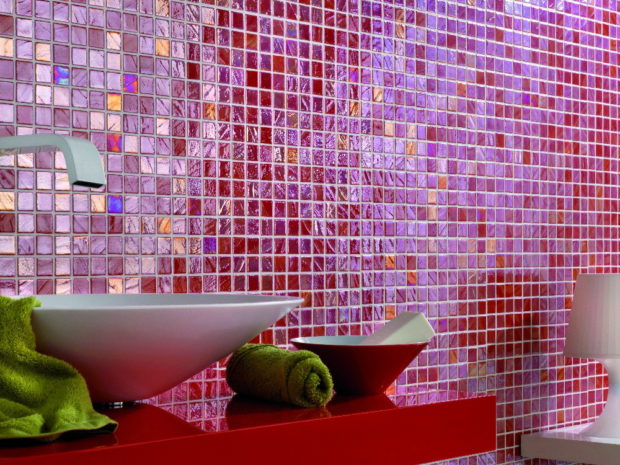
Stone mosaic
The stone mosaic is obtained from different breeds, usually using jasper, slate, tuff, marble, granite, travertine, malachite, lapis lazuli, tufa, amethyst and others. Natural material is processed and mosaic elements of various shapes are obtained. Tiles can sanded, polished, artificially aged. Natural shades of stone are unique, therefore, the finish comes out unique.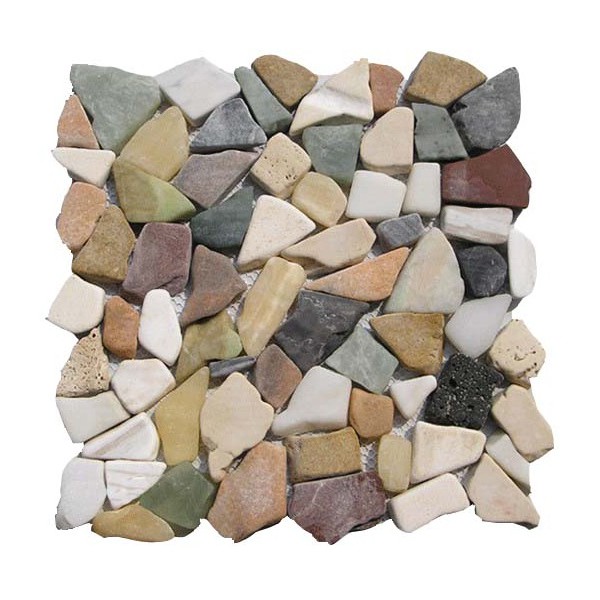
Stone mosaic repeats all the properties of a natural material: it resistant to moisture, fire and temperature extremes, strong and durable. The material can be used for cladding floors and walls, fireplaces, facades, as well as at arrangement garden pathsdecorating countertops to accent various elements of decor (mirrors, bar counters, window sills).
In particular honor mosaic from marblebut it is also very expensive. He shows himself well pebble mosaicAt the same time, pebbles can be collected absolutely free of charge on the river bank and veneered with it individual elements in the bathroom or in the kitchen.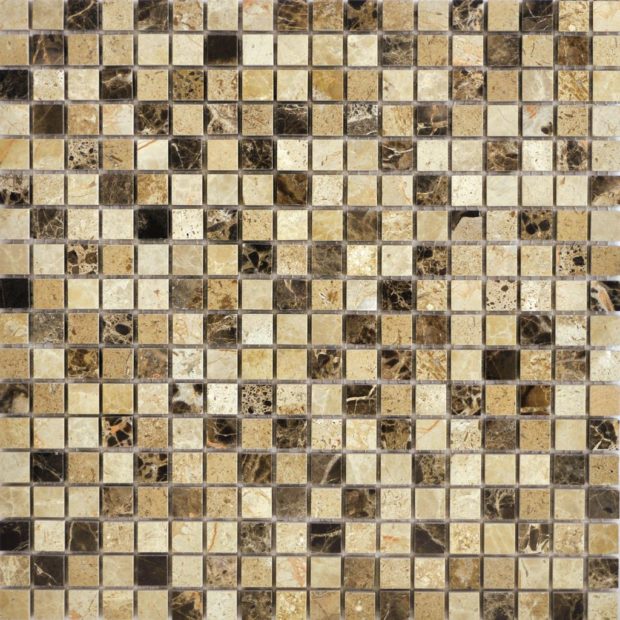
Metal mosaic
We note immediately, this is an option for an amateur. A metal mosaic appeared relatively recently, it is mainly made from steel and brass. Metal elements are mounted on a rubber or rubber base, which retains the necessary flexibility. The shape of the elements can be absolutely any: from triangles and hexagons to irregular geometric shapes. The surface can be polished or matte, have notches. Similar finishes are used in interiors in styles hi-tech and loft.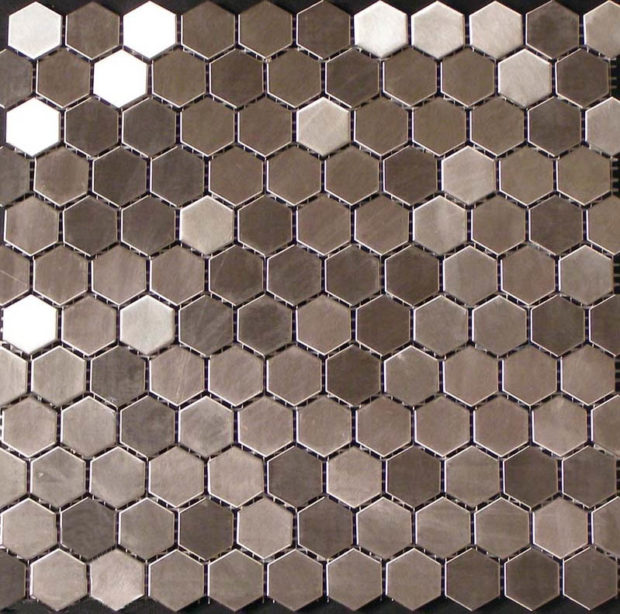
Material requires special care, because it is afraid of certain chemicals and will not tolerate the effects of abrasive particles, so it is not recommended to use a metal mosaic for an apron in the kitchen.However, some manufacturers produce special mosaic collections from stainless steel for bathroom use.
Special chic - precious metal mosaic. When it comes to gold, a thin sample foil 585 is placed between two layers of transparent glass. Naturally, this finish is very expensive and is considered exclusive.
Wood mosaic
Another novelty of the modern market of finishing materials. The mosaic elements are made of valuable wood, they can have any shape, and the decorative effect is achieved through a combination of tiles of different colors and textures. Such material, like the whole tree, is afraid of moisture, fire, pests and requires specific care.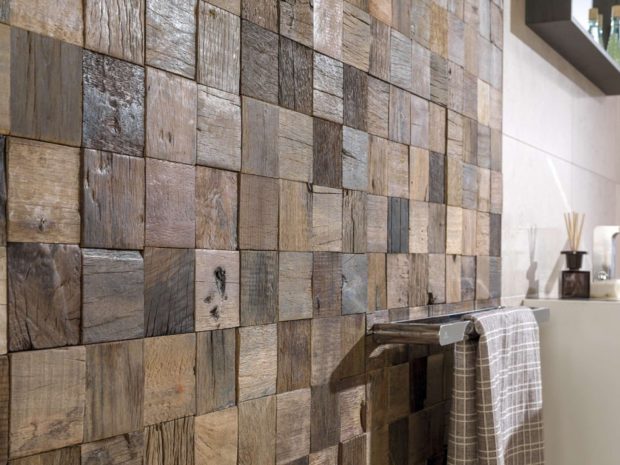
No. 5. Types of mosaics by type of basis
On sale is a mosaic of the following main types:
- on a mesh basis. The required number of elements in the required order is attached to the grid. Entire squares are formed, which are mounted on the walls. Similarly, you can easily trim curved surfaces, and during installation, you can adjust the distance between the elements;
- on paper. The paper is attached to the front surface of the tiles and reliably holds them in the required order. After laying and drying the glue, the paper is moistened with warm water and easily removed;
- without foundation, or mosaic in bulk. It is rare enough, it is used only by professional craftsmen to create beautiful panels of high complexity.

No. 6. What else to consider when choosing a mosaic?
When choosing mosaics for bathrooms, kitchens and other rooms, also pay attention to such factors:
- grade. The mosaic of the first grade will be more durable and strong, it is indicated in red in the international marking. The second grade is indicated in blue, it is cheaper, but it is quite good in strength. The third grade is marked in green;
- for the floor you need to take more wear resistant mosaic, which is indicated in the marking with a foot pattern. Also, the material should be durable and non-slip;
- resistance to aggressive environments marked on the packaging with a pattern of a flask;
- amount of material calculated on the basis of the surface area to be decorated. It is better to take material with a margin of 10-15%;
- color is selected based on your own preferences and features of the interior solution.

Number 7. The process of laying mosaic tiles
Installation of mosaic tiles is not much more complicated than ordinary ceramic tiles. All work can be done independently, and the procedure is as follows:
- surface preparation. Walls and gender is important to levelif necessary primerso that the tile adhesive does not soak into the surface;
- tool preparation. For installation of most types of mosaics, gray is suitable. tile adhesive, only depending on the operating conditions it is necessary to take moisture-resistant / frost-resistant / fungicidal glue. For laying transparent glass mosaics, it is better to take white glue - so the aesthetics will be higher. A spatula-comb is taken with teeth 3-4 mm high;
- wall or floor marking. Previously, all the elements can be laid out on the floor in the necessary order, measure the parameters of the resulting panel and transfer the markings to the surface where the masonry will be carried out;

- glue application on the first plot and mosaic laying. There is no need to apply glue directly to the entire wall / floor - it dries quickly. Laying the elements, control the evenness of the rows, and press the mosaic into the glue, taking care that it does not get on the front side of the elements;
- after everything dries up (it is better to give 48 hours to dry), you can take off paperby pre-wetting it. It is better to start pulling from the upper corners;
- grouting. Today they usually use grouting epoxy based, but cement are also acceptable. The grout is selected in the color of the tile or in a contrasting shade. It is applied with a rubber spatula, first in one direction, then in the other.After it sets, the remains of the tiles can be removed with a damp sponge;
- polishing mosaic with felt.

Number 8. Mosaic tiles, or pseudo mosaics
Mosaic with a lot of advantages has only one drawback - the high price. If the cost of the material is the only problem that stops you, then you can cheat and buy mosaic tiles. With the right choice, it will not look any different from a real mosaic, but there are also limitations - you can use a pseudo-mosaic only on flat surfaces.
Mosaic tiles are ordinary ceramic tiles, on which the corresponding pattern is applied. For plausibility, trowel joints are imitated, on the execution of which the final result depends. All psdomozosaika can conditionally divided into three types, depending on the simulation of seams:
- tile without slots on the surface where the relief is achieved by stamping on the glaze. After installation, the boundaries of individual large slabs will be clearly visible, and imitation of the mosaic is not achieved;
- textured tile, where only convex elements are covered with glaze, and the boundaries between them are processed at the factory by a substance simulating a grout. The option is better, but you will have to select the grout exactly in the color of the one used by the tile manufacturer, otherwise the seams will be clearly visible;
- tile with slots - this is the best variant. At the factory, a lot of grooves are made on large tiles, which simulate the seams between the mosaic elements. After mounting the tiles, these seams are rubbed together with the seams between the solid elements, and as a result, a very accurate imitation of the mosaic panel is achieved.

Mosaic is a universal decor that fits perfectly into any style of interior and any room, and a wide range of solutions allows you to choose the option for any budget.





